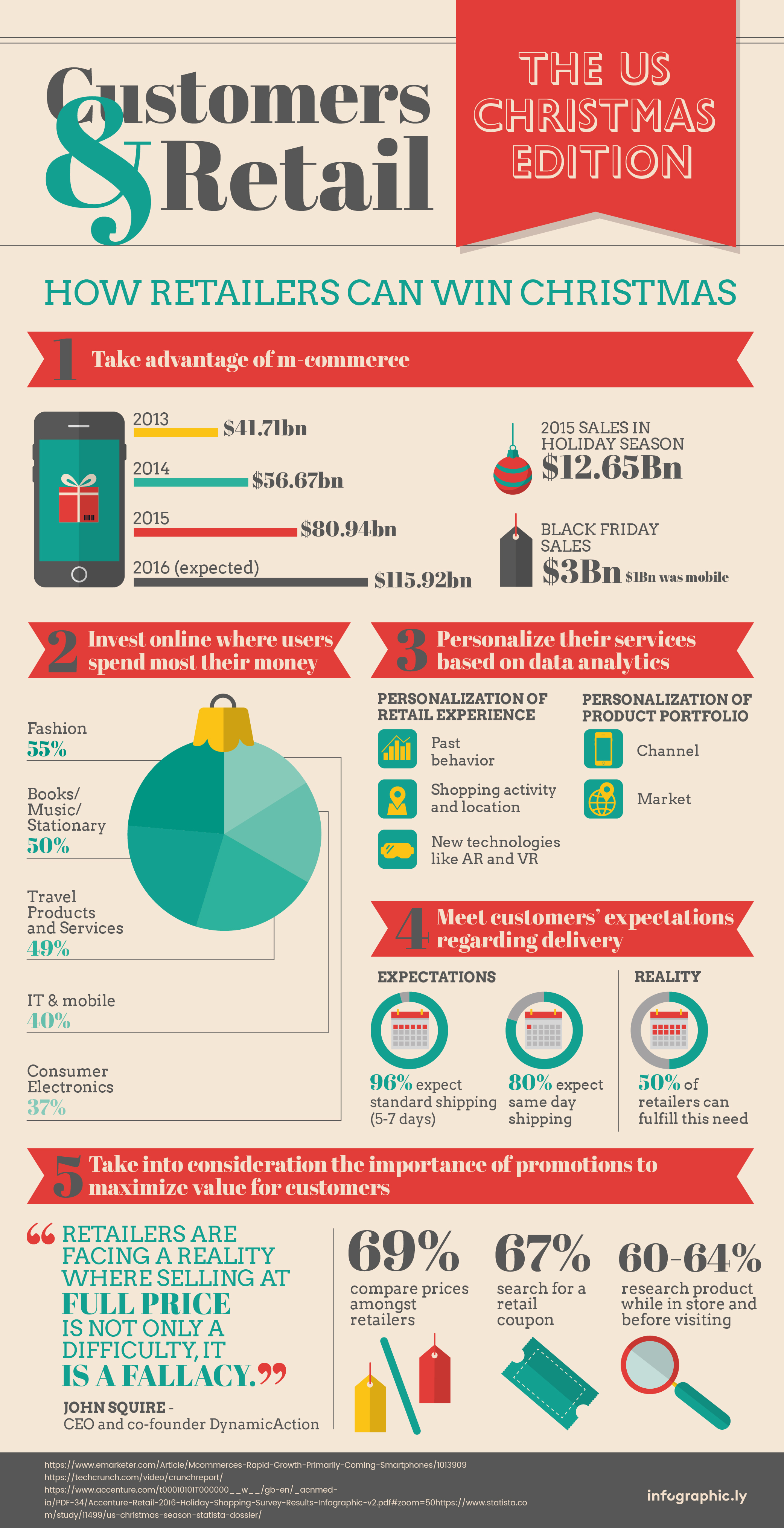[INFOGRAPHIC] How Retailers Can Win Christmas: The US Edition
With Christmas around the corner and the closing of end of year accounts, retail companies are pushing for the last grand finale. This year we caught a glimpse of consumer habits earlier with reports on Black Friday revenues. Indeed, in the US specifically, sales amounted to $3Bn of which 1/3 was executed using mobile. In 2016, according to Amazon, Thanksgiving and Cyber Monday have both exceeded last year’s sales. Holiday-season sales, including Christmas, are expected to exceed the $12.65Bn sales figure of 2015.
The main takeaway for retailers has been the prominence of mobile-commerce (m-commerce) which has almost doubled since 2014. Total mobile sales are expected to reach $115.92Bn in 2016. During holidays, 50% of people choose to use their mobile as a way to beat queues and in-store traffic. Mobile as we have seen has become an integral part of the consumer experience and whether shoppers use it as a means to purchase, they also invest a lot of time, in and out of stores to research prospective products.
Using online and mobile as their platforms, retailers can really invest their resources to create a more personalized experience for their customers.
In-store, retailers can take advantages of all the new technologies that are springing up at a very high rate to record and retain customers’ shopping data through sensors and beacons (history, geo-location) and be able to send real-time promotions to guide the shopper through his journey. Virtual Reality and Augmented Reality also make their entry in the shopping sphere as they provide customers with real-time visibility to products, be it in the gaming sector or retail and fashion. Customers are able to find out more about their selected products, but they are also able to visualize them before buying. This personalized experience is crucial in developing customer trust and serves as a means to break through the noise of too much information by just providing the relevant one.
Personalizing product portfolio is also necessary to optimize sales, as retailers can evaluate what types of product sell better online vs offline and through which channels their customers are looking.
Delivery has also been a crucial element for retailers. Customers now expect a seamless shopping experience from start to finish, with 96% expecting their items to arrive within 5-7 days and 80% expecting same day shipping. The reality however is that only 50% of the retailers have developed the capabilities to meet these expectations. In that regard, it is very important to think about delivery as a game changer, even more so in the holidays season.
In terms of the industries most affected, online purchases have also showed that consumers spend most their money on fashion. 55% of the people who shop online, shop for clothing. Books, music and stationary as well as travel product and services come to a close second with 50%. A good insight into what works for each retailer online is key into shaping their offerings, at least for the holidays. By optimizing the experience for their users and making their product as transparent and as visible as possible, retailers are able to earn the trust of their customers and inherently give value to their products.

